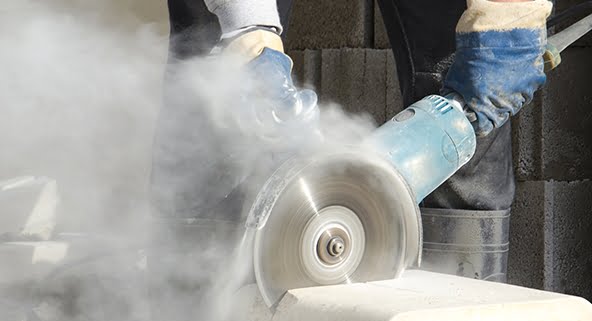Crystalline Silica – Are You Doing Enough?
You may know that crystalline silica is very commonly used in manufacturing building products and in construction materials. You may not know it’s killing workers at an alarming rate, and you don’t have to have worked around it for long to feel its effects.
Crystalline silica is a naturally occurring mineral found in most rocks, sand, clay; and importantly, in products such as bricks, concrete, tile and composite stone.
For the shopfitting industry, workers may be exposed to crystalline silica when cutting, grinding, sanding and polishing, or during the installation of stone benchtops and other stone products.
The crystalline silica content in stone benchtops can vary widely depending on the type of stone used. Engineered stone products can contain up to 95 per cent crystalline silica. A natural stone like granite may contain from 20 to 60 per cent.
Silica particles can be so small that they are not visible, and they are small enough to penetrate deep into the lungs, potentially leading to silicosis. Silicosis is a scarring of the lungs, resulting in loss of lung function that causes permanent disability and early death. It is incurable and continues to develop after exposure has stopped.
Fabricating and installing natural and artificial stone bench tops can release high levels of RCS through cutting, grinding and polishing processes, particularly when dry cutting methods are used.
If you or your workers operate powered hand tools to cut or grindstone, i.e. circular saws or grinders, you risk having some of the highest RCS exposures of all fabricators. This can occur in a workshop or on a job site during installation. Workers performing other tasks in areas where powered hand tools are used may also be exposed to high levels of dust.
In all states and territories of Australia, there is a duty on employers (or PCBUs – persons conducting a business or undertaking) to ensure the health and safety of workers and others. You must manage the risk from work tasks that involve crystalline silica.
From conducting a thorough review of all work tasks involving crystalline before you start, to considering where and how your workers are coming in contact with silica dust, the tools they are using, even where they eat meals and what they wear to go home… managing the high risk of working with crystalline silica cannot be ignored. Contact your state regulator for more information. SafeWork Australia also has a Technical Guide for Managing Silica Exposure in the Workplace.




Leave a Reply
Want to join the discussion?Feel free to contribute!